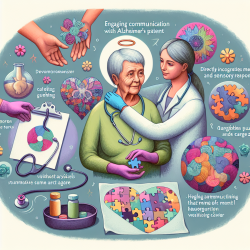Introduction to Bio-Inspired Algorithms
In the realm of speech-language pathology and online therapy services, optimizing processes is crucial to achieving the best outcomes for children. One fascinating development in this area is the application of bio-inspired algorithms, particularly in solving complex problems like the Constrained Shortest Path (CSP) problem. This blog explores the innovative method proposed by Wang et al. (2014) in their research article, "A Bio-Inspired Method for the Constrained Shortest Path Problem," and how it can inspire practitioners to enhance their skills or delve deeper into research.
Understanding the Constrained Shortest Path Problem
The CSP problem involves finding the shortest path in a network while adhering to certain constraints, such as time or cost limits. This problem is NP-hard, meaning it is computationally challenging to solve, especially as the network size increases. Traditional methods like Lagrangian relaxation and dynamic programming have been used, but they often fall short in large networks due to the "curse of dimensionality."
The Bio-Inspired Solution
Inspired by the behavior of the slime mold Physarum polycephalum, Wang et al. propose a bio-inspired algorithm that mimics the organism's ability to form efficient networks. The algorithm combines the Physarum model with a penalty mechanism to iteratively find the shortest path that meets the constraints.
- Physarum Model: This model uses the organism's natural network formation as a basis for solving pathfinding problems.
- Penalty Mechanism: If the path does not meet constraints, a penalty is applied, guiding the algorithm to adjust and find a viable solution.
Applications in Speech-Language Pathology
For practitioners in speech-language pathology, understanding and applying such algorithms can enhance decision-making processes, particularly in resource allocation and scheduling. By optimizing these processes, practitioners can focus more on delivering quality therapy to children.
Encouraging Further Research
This bio-inspired approach is not only a solution to a mathematical problem but also a call to action for further research. Practitioners are encouraged to explore how these algorithms can be adapted and applied to various challenges in the field of education and therapy.
Conclusion
Incorporating bio-inspired methods into practice can lead to more efficient and effective outcomes in speech-language pathology. By embracing data-driven decisions and innovative research, practitioners can significantly enhance the quality of therapy services provided to children.
To read the original research paper, please follow this link: A Bio-Inspired Method for the Constrained Shortest Path Problem.










